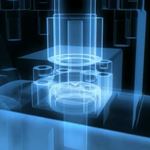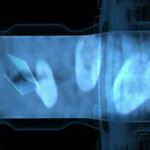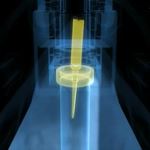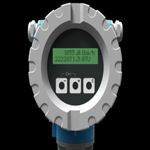The vortex flowmeter is a flow measurement based on the vortex principle. In the 16th century, Italian Leonardo Da Vinci observed how vortices formed in flowing water; about 400 years later, Hungarian physicist Theodorn Von Karman described the physical laws of the formation of these vortices. The following is the principle of the measurement method:
 | Each vortex flowmeter has a shedder bar installed in the center of the pipeline, and it is an obstacle used to interfere the flow. |
 | Downstream of the shedder bar, there is a mechanical sensor used to record the slightest differential pressure generated by the flowing fluid. |
 | If the fluid does not flow, there will be no vortex formation. |
 | Once the fluid starts to flow and reaches a certain flow rate, vortices will gradually form downstream of the shedder bar. These vortices are alternately separated on both sides of the shedder bar and carried away by the fluid. |
 | A high pressure and low pressure area is formed downstream of the shedder bar, which results in a phenomenon called "Kaman Vortex ". |
 | These pressure differences are fully matched with the frequency of the passing vortex, and are accurately measured by a mechanical sensor. The sensor is very unique because its internal balance system makes the pipeline suffer up to 1G of vibration, pressure shock and temperature sudden change would not influence flow. |
 | The distance between two consecutive vortices corresponds to the specific volume of the fluid, so the total flow can be calculated by counting the passing vortices; the higher the flow rate, the higher the frequency of the measured vortices. |
 | In some applications, the flow rate is too low to form a detectable vortex. The flow rate can be increased by installing a reduced-bore vortex flow meter. This change will not affect the measurement accuracy. |
 | A temperature sensor can be added to the sensor to increase the temperature measurement function. |
 | With a built-in flow calculator, can calculate mass flow or energy flow that changes with temperature. This function is particularly important in the measurement of saturated steam or various industrial gases. |